-
“Why Won’t My Heel Pain Go Away?”
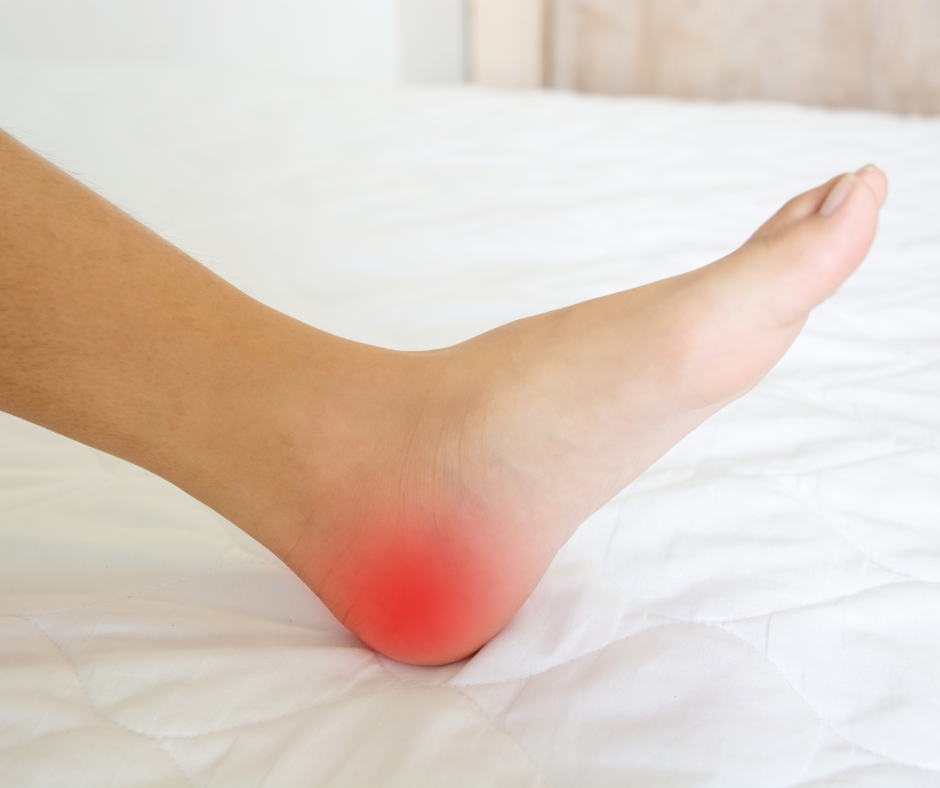
You’ve been dealing with heel pain for months. You’ve done the icing. You’ve rolled your foot on a frozen water bottle. You’ve taken enough ibuprofen to stock a pharmacy. At first, it seemed to help. But now, you’ve hit a wall. Why did your treatment stop working?
The answer lies in how your body handles long-term injury. If you have been in pain for months, you likely aren’t dealing with simple inflammation anymore; you are dealing with degeneration. And to fix that, you don’t need more rest; you need a “wake-up call.”
That’s where Shockwave Therapy (ESWT) comes in. In this blog, Kentlands Foot & Ankle Center will explain how the treatment works, what it handles best, and more.
The “Chronic” Trap: Inflammation vs. Degeneration
To understand why Shockwave works when other methods fail, you have to understand what’s happening inside your foot.
- Acute Phase (The first few weeks): You have Plantar Fasciitis. The tissue is inflamed. Ice and anti-inflammatories work here because they calm the fire.
- Chronic Phase (Months later): The inflammation subsides, but the tissue hasn’t healed correctly. It has become thick, scarred, and stagnant. This is often called Plantar Fasciosis. The body has essentially “given up” on repairing that spot because the blood flow is poor.
This is why your ice pack stopped working. You can’t “anti-inflame” tissue that isn’t inflamed; you have to regenerate tissue that has degenerated.
How Shockwave “Tricks” Your Body into Healing
Shockwave Therapy is a regenerative technology. It uses high-energy acoustic sound waves to penetrate deep into that scarred, stagnant tissue.
Think of it as a controlled reboot for your injury.
- Micro-Trauma: The sound waves create microscopic agitation in the damaged tissue.
- The Signal: This signals your brain that an acute injury has just occurred in that specific spot.
- The Rush: Your body responds by rushing oxygen-rich blood, stem cells, and growth factors to the area (a process called neovascularization).
We aren’t masking the pain. We are forcing your body to restart the healing cycle that it abandoned months ago.
Is Shockwave Better Than a Cortisone Shot?
This is one of the most common questions we get. Both are effective, but they have opposite goals.
- Cortisone is a powerful suppressor. It shuts down inflammation and pain quickly. It is fantastic for acute relief, but it does not repair the tissue.
- Shockwave is a stimulator. It takes longer to see results (weeks, not days), but because it builds new, healthy tissue, the results are often longer-lasting and more permanent.
For active patients who want to fix the problem rather than just hide it, Shockwave is often the superior long-term choice.
Who is the Ideal Candidate?
Shockwave isn’t usually our first line of defense for a mild strain. Rather, we use it for:
- Pain that has lasted longer than 3 months.
- Injuries that have “plateaued” with physical therapy.
- Achilles Tendonitis or Plantar Fasciitis that returns as soon as you stop resting.
Break the Cycle of Chronic Pain
You don’t have to accept heel pain as your “new normal.” Schedule a consultation today to see if Extracorporeal Shockwave Therapy is right for you!
Still have questions? Get in touch for a comprehensive foot examination with Kentlands Foot & Ankle Center podiatrist Dr. Jon M. Sherman. To make your appointment, please call our office at 301-825-9697. You can also contact us online.
-
Love the Loafer Trend? Sidestep the Pain With a Podiatrist’s Help!
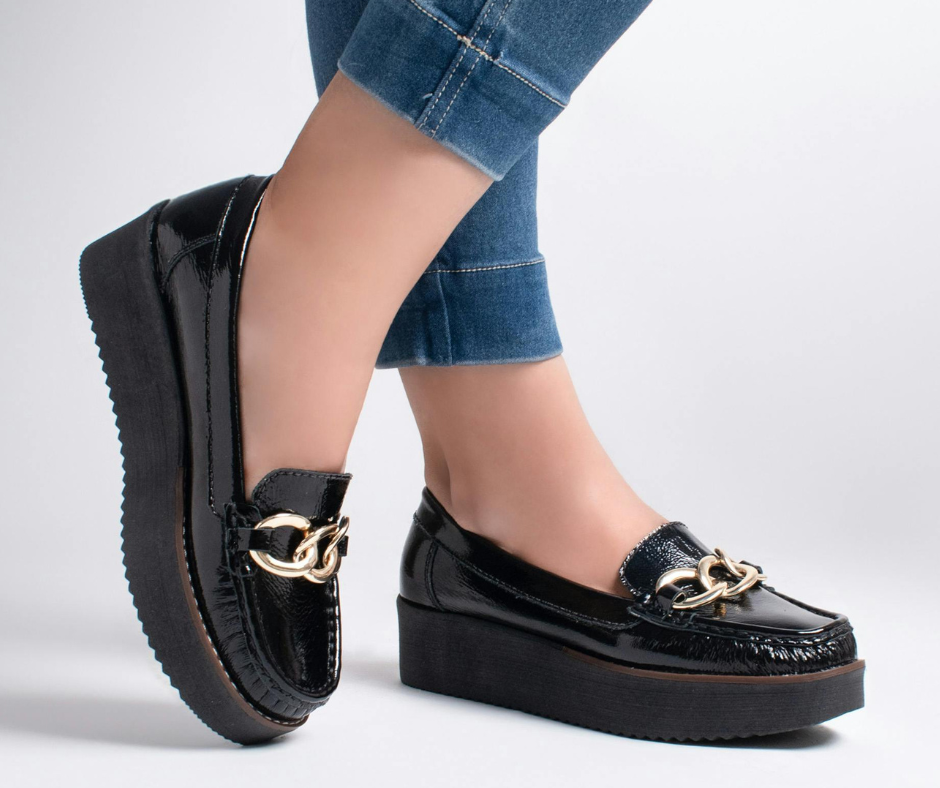
Walk down any city street this fall, and you’ll see them everywhere: sleek, stylish, and sophisticated loafers. They are the go-to shoe for the modern professional, a perfect blend of casual comfort and office-appropriate style. But this fashion trend has a dark side that many are discovering the hard way: persistent, nagging foot pain.
If you’ve found yourself with aching arches or a sore heel after a day in your favorite flats, you’re not alone. The very features that make many loafers look so chic are often the same ones that are terrible for your feet. In this blog, Kentlands Foot & Ankle Center will explain why your stylish shoes might be the source of your pain…and how you can choose a pair that offers fashion and function.
“Why Do My ‘Comfortable’ Flats Hurt Me So Much?”
The irony of many popular loafers and ballet flats is that they are marketed as a comfortable alternative to heels, but they often lack the fundamental features your feet need for support. This is mostly due to:
- Zero Arch Support: The most common design flaw is a completely flat interior.
- Without a supportive arch, the full force of your body weight collapses onto your plantar fascia, the ligament that runs along the bottom of your foot.
- This constant strain is a primary cause of plantar fasciitis.
- No Shock Absorption: A thin, flimsy sole provides zero cushioning against hard surfaces like concrete sidewalks and office floors.
- Every step sends a jarring impact through your heel and up your kinetic chain, leading to heel pain and general foot fatigue.
- Narrow Toe Boxes: Many fashion-forward loafers have a tapered or pointed toe box that squeezes your toes into an unnatural position.
- This can aggravate existing bunions and hammertoes or even contribute to their formation over time.
The Podiatrist’s Checklist for a Better Loafer
You don’t have to give up the style you love. You just need to become a smarter shopper. The next time you’re looking for a new pair of flats, use this simple checklist!
[✔] The Bend Test: A good shoe should only bend where your foot naturally bends—at the ball of the foot. If you can fold the shoe in half in the middle of the arch, it has no structural support.
[✔] The Squeeze Test: The back of the shoe that cups your heel (the heel counter) should be firm and stable. A flimsy heel counter provides no support and can contribute to instability.
[✔] Look for a Removable Insole: This is a game-changer. A shoe with a removable insole allows you to add your own custom orthotic.
[✔] Check for a Subtle Heel: Even a slight, quarter-inch heel is better than a completely flat sole. This small amount of elevation can help to reduce strain on your Achilles tendon and plantar fascia.
The Power of Custom Orthotics
If you’re already dealing with chronic pain or if your foot structure requires more significant support, consider a custom orthotic.
Unlike an over-the-counter insert, a custom orthotic is a prescription medical device created from a 3D scan of your feet. Modern orthotics can be designed with a slim profile to fit discreetly inside many styles of dress shoes and loafers!
Still have questions? Get in touch for a comprehensive foot examination with Kentlands Foot & Ankle Center podiatrist Dr. Jon M. Sherman. To make your appointment, please call our office at 301-825-9697. You can also contact us online.
- Zero Arch Support: The most common design flaw is a completely flat interior.
-
Boost Your Balance & Prevent Dangerous Falls!

Falls Prevention Awareness Month truly matters. After all, the risk it addresses is all too real: according to the CDC, one in four adults over 65 will fall, making it a leading cause of serious injury. In this post, Kentlands Foot & Ankle Center explores common risk factors and shares how you can improve your balance, too!
The 10-Second Balance Test
How can you tell if you’re at risk of falling? All you need is 10 seconds and a chair!
- Stand on a flat, non-slip surface near a counter or sturdy chair you can grab if needed.
- Lift one foot off the ground. Keep your elevated foot from touching your standing leg!
- Cross your arms over your chest.
- Try to hold this position for 10 seconds without touching down or grabbing for support.
Could you do it? If you felt unsteady or had to put your foot down, it’s not just a sign of “getting older.” It’s a signal that your body’s balance system needs attention.
How Do Your Feet Affect Your Balance?
Your feet are complex structures designed to keep you stable and upright. When problems arise, they can compromise your entire body’s balance in several ways:
- A Faulty Foundation: Foot deformities like bunions or hammertoes, or alignment issues like flat feet, can change the way your foot meets the ground.
- This creates an unstable base, forcing your ankles, knees, and hips to work overtime to compensate, which can easily throw you off balance.
- Scrambled Signals: Your feet are packed with nerves that send constant information to your brain about your position in space (a sense called proprioception).
- Conditions like diabetic neuropathy or even just the stiffness from arthritis can interfere with these signals. When the brain doesn’t get a clear message from the feet, your stability suffers.
- Pain and Compensation: When you have a painful spot on your foot, you naturally change the way you walk to avoid putting pressure on it.
- This altered gait—a limp or a shuffle—is an unnatural movement pattern that can significantly compromise your balance and increase your risk of a fall.
The Podiatrist’s Role: Rebuilding Your Foundation
As foot and ankle specialists, our goal is to address these foundational issues to improve your stability. A key tool in our arsenal for fall prevention is the custom orthotic.
Unlike a flimsy store-bought insole, a custom orthotic is a prescription medical device created from a precise mold of your feet. It works to improve balance by:
- Correcting Misalignment: An orthotic provides targeted support to correct issues like flat feet or overpronation, creating a stable, properly aligned foundation for your entire body.
- Redistributing Pressure: By evening out the pressure across your foot, orthotics can significantly reduce pain from conditions like arthritis or bunions, allowing you to walk with a more natural, stable gait.
- Improving Sensory Feedback: For some patients, orthotics can improve the sensory signals being sent from the feet to the brain, providing a clearer sense of position and stability.
It’s important to note that regular exercise and stretching can make a difference, too!
Get In Touch and Stay Stable!
If you or a loved one is concerned about their balance or has experienced a fall, don’t wait. Schedule a comprehensive fall risk assessment with our team today!
Get in touch for a comprehensive foot examination with Kentlands Foot & Ankle Center podiatrist Dr. Jon M. Sherman. To make your appointment, please call our office at 301-825-9697. You can also contact us online.
-
A Podiatrist’s Guide to Plantar Fasciitis
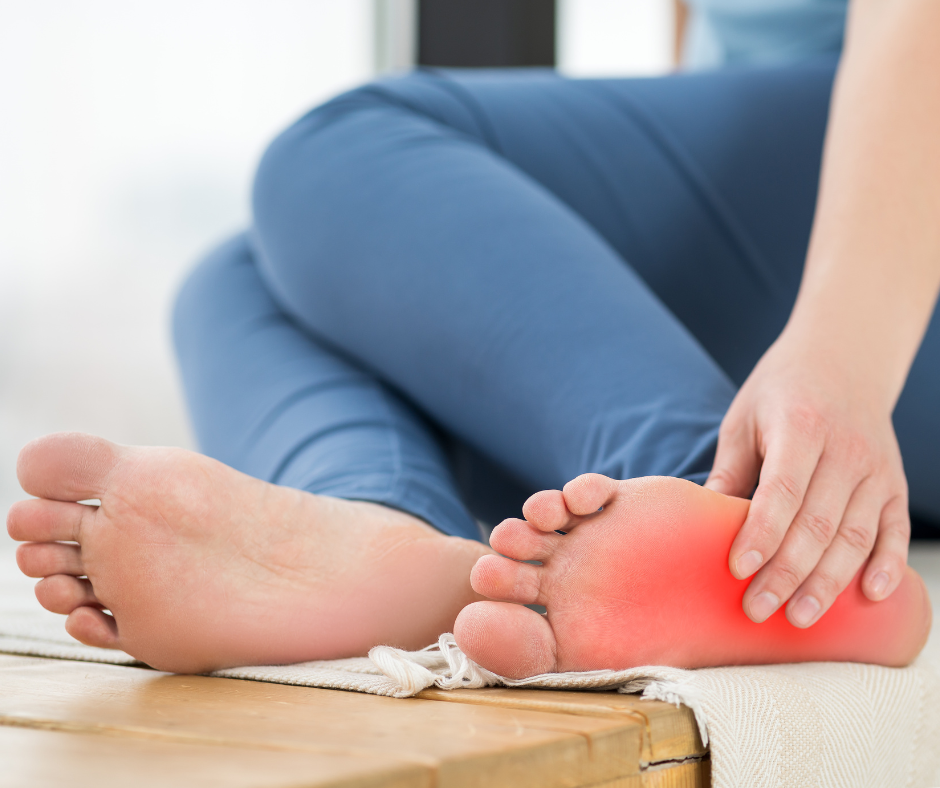
You can’t fix a problem if you don’t even know what it is! That’s often the issue with plantar fasciitis, a common form of chronic heel pain that could affect up to 10% of the population! This time around, Kentlands Foot & Ankle Center will be explaining what defines the condition and which non-invasive treatment options you can trust.
Q: What exactly is plantar fasciitis?
A: Plantar fasciitis is the inflammation of the plantar fascia, a thick band of tissue running along the bottom of your foot, connecting your heel bone to your toes. Think of it as your foot’s built-in shock absorber. When it’s overstressed, it becomes painful.
Q: What does it feel like?
A: The hallmark symptom is stabbing heel pain, especially in the morning or after rest. It often feels better as you move around, then worsens again after activity. Some describe it as a deep ache or burning sensation along the arch.
Q: What causes it?
A: Several factors can contribute:
- Foot Mechanics: Flat feet, high arches, or abnormal walking patterns put extra strain on the plantar fascia.
- Overuse: Runners, walkers, and those who stand for long periods are at higher risk.
- Improper Footwear: Lack of arch support and cushioning.
- Tight Calf Muscles: Limit ankle flexibility, increasing stress on the fascia.
- Obesity: Excess weight adds pressure.
Q: How is it diagnosed?
A: A podiatrist can usually diagnose plantar fasciitis with a physical exam and review of your symptoms. X-rays may be needed to rule out other issues like stress fractures.
Q: How can I fix this without surgery?
A: Good news! About 95% of plantar fasciitis cases improve with non-surgical methods. Here are some key approaches:
- Rest: Reduce activities that aggravate the pain.
- Ice: Apply ice packs or roll a frozen water bottle under your foot for 15-20 minutes, 3-4 times a day.
- Stretching: Gentle stretches for your plantar fascia, Achilles tendon, and calf muscles are crucial.
- Supportive Shoes and Orthotics: Proper arch support and cushioning can redistribute pressure. Custom orthotics are often beneficial.
- Night Splints: These keep your foot flexed while you sleep, stretching the plantar fascia.
- Medications: Over-the-counter pain relievers (NSAIDs) can help with inflammation.
- Physical Therapy: A physical therapist can guide you through stretches, strengthening exercises, and other treatments.
Keep an eye out for future posts and more detailed information on treatments! We’ll explore options like ESWT, which involves using sound waves to stimulate healing in the plantar fascia.
Interested in learning more? We’re always happy to help! Schedule a comprehensive foot examination with Kentlands Foot and Ankle Center podiatrist Dr. Jon M. Sherman. To make your appointment, please call our office at 301-825-9697.
-
Bunion Basics: Understanding That Bump on Your Foot
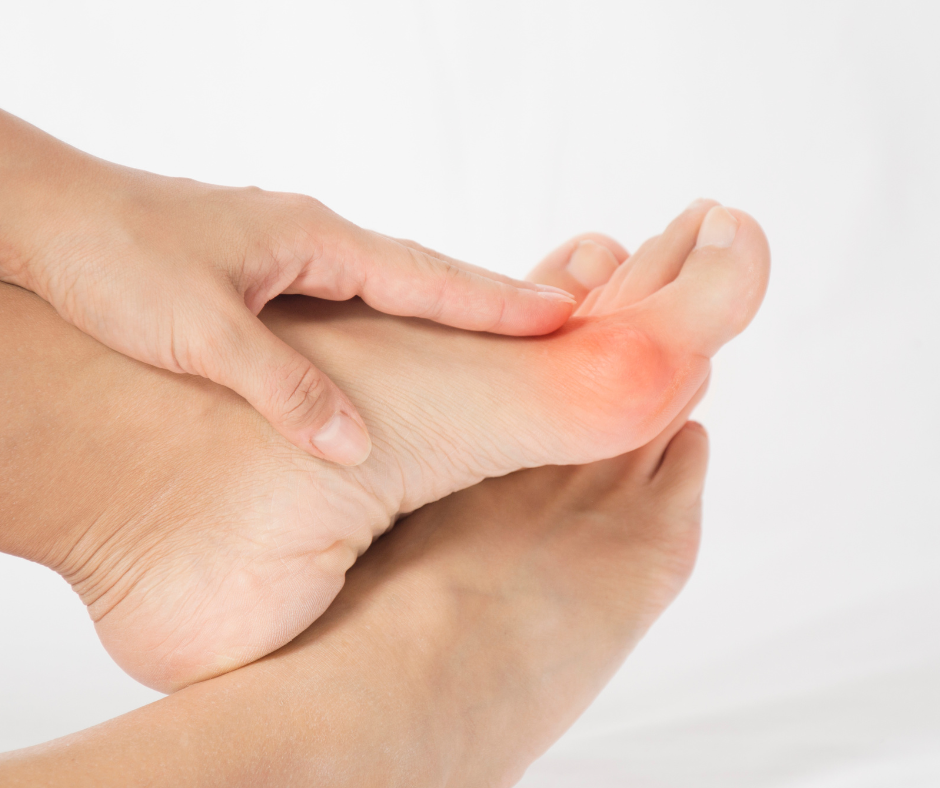
It’s a typical day…until you put on your shoes. That’s when you notice a bony bump forming at the base of your big toe. What is it? How did it get there? And why does it seem to be “drifting” towards your second toe?
If this sounds familiar, you might be dealing with a bunion, medically known as Hallux Valgus. To keep you informed on why bunions form and what to watch for, Kentlands Foot & Ankle Center is breaking down the basics below.
What’s a Bunion?
A bunion isn’t just an overgrowth of bone. It represents a change in the actual bony framework of the front part of your foot.
- The long bone connected to the big toe (the first metatarsal) starts to drift outward, and the big toe itself begins to point inward towards the smaller toes.
- This misalignment creates the characteristic bump on the side of the foot at the base of the big toe.
Bunions are often progressive, meaning they tend to get worse over time if not managed appropriately.
Why Do Bunions Form?
While ill-fitting footwear gets a lot of blame, the primary cause of bunions is usually:
- Heredity: The biggest factor! Certain inherited foot types and faulty foot mechanics (like excessive pronation or flat feet) make you more susceptible to developing bunions. If your parents or grandparents had bunions, you might be more likely to develop them, too.
- Foot Structure & Biomechanics: The way your foot functions when you walk can place abnormal stress on the big toe joint, contributing to the deformity over time.
- Footwear (The Aggravator): While usually not the root cause, shoes that are tight, narrow, or have high heels can definitely aggravate an existing bunion and potentially accelerate its progression. They force the toes into an unnatural position.
Less common causes can include foot injuries or certain types of arthritis.
Spotting the Signs: Bunion Symptom Checklist
How do you know if that bump is truly a bunion? Look for these common signs:
- The Bump: A bony prominence on the side of your foot at the base of the big toe.
- Toe Drift: Your big toe angling towards your second toe.
- Pain or Soreness: Discomfort around the big toe joint, often worse when wearing shoes or after activity.
- Redness & Swelling: Inflammation around the bony bump.
- Corns or Calluses: These can develop on the bump itself, between the big and second toes, or even on the ball of the foot due to altered pressure.
- Restricted Motion: Decreased flexibility or stiffness in your big toe joint.
- Difficulty Fitting Shoes: Finding shoes that are comfortable and don’t irritate the affected area.
Diagnosis Matters!
Even if your bunion isn’t causing significant pain yet, early evaluation allows us to confirm the diagnosis, rule out other conditions, and plan the best course of treatment for your unique needs. Affected? Don’t suffer in silence. Schedule your appointment and move toward relief today!
Interested in learning more? We’re always happy to help! Schedule a comprehensive foot examination with Kentlands Foot & Ankle Center podiatrist Dr. Jon M. Sherman. To make your appointment, please call our office at 301-825-9697.
-
Custom Orthotics, Biomechanics, and You: Step into Better Health with 3D Scanning
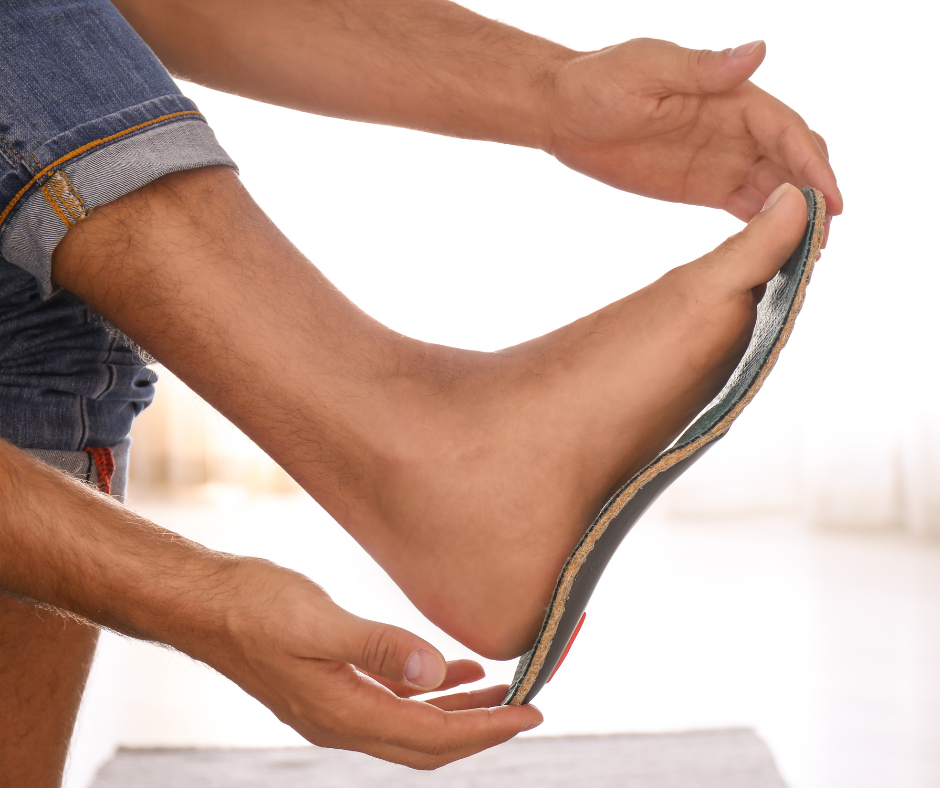
Our feet are the foundation of our bodies, and proper biomechanics – the way our muscles, bones, and joints work together – are essential for pain-free movement and overall well-being.
Custom orthotics can play a vital role in optimizing your biomechanics, and advancements in 3D scanning technology are revolutionizing the way these supportive devices are created. In this post, Kentlands Foot & Ankle Center explains how new tech is providing orthotics that are better than ever for all kinds of issues, so read on to learn more!
Understanding Biomechanics
When your feet don’t function optimally, it can throw off your entire body’s alignment. This can lead to a variety of issues, including:
- Foot Pain: Plantar fasciitis, heel spurs, bunions, and metatarsalgia.
- Knee Pain: Misalignment leading to patellofemoral pain syndrome or IT band syndrome.
- Hip and Back Pain: Caused by altered gait and posture.
- Balance Problems: Increased risk of falls, especially in older adults.
- Sports Injuries: Stress fractures, shin splints, and Achilles tendonitis.
Custom Orthotics: Tailored Support for Your Unique Needs
Unlike over-the-counter inserts, custom orthotics are specifically designed to address your individual foot structure and biomechanical imbalances. They provide targeted support and cushioning, helping to:
- Improve Weight Distribution: Evenly distribute pressure across your feet, reducing stress on specific areas.
- Enhance Balance and Stability: Provide a stable base of support, improving balance and reducing the risk of falls.
- Correct Gait Abnormalities: Guide your feet into a more natural and efficient gait pattern.
- Prevent and Aid Recovery from Sports Injuries: Offer shock absorption and support to reduce strain on joints and soft tissues.
The 3D Advantage: Precision and Personalization
Traditional methods of creating orthotics, like plaster casting, can be messy and imprecise. 3D scanners, on the other hand, can capture a highly accurate digital model of your feet in seconds, providing a detailed blueprint for crafting truly customized orthotics.
- Superior Accuracy: 3D scans capture the intricate contours of your feet with unparalleled precision.
- Dynamic Assessment: Some advanced scanners can even analyze your gait while you walk or run, providing a dynamic assessment of your foot function.
- Faster Turnaround: Digital models can be instantly sent to the lab, speeding up the fabrication process.
The result? A pair of custom orthotics that fit your feet like a glove, providing optimal support and comfort in one.
Interested in learning more? We’re always happy to help! Schedule a comprehensive foot examination with Kentlands Foot & Ankle Center podiatrist Dr. Jon M. Sherman. To make your appointment, please call our office at 301-825-9697.
-
5 Common Foot and Ankle Injury Myths in Sports

From little league to professional sports, foot and ankle injuries are some of the most common among athletes. And unfortunately, many misconceptions and myths surround these issues, which can hinder recovery.
In this post, we will debunk these myths to help athletes better address their foot and ankle troubles.
Myth 1: All Ankle Sprains Are the Same.
Fact: Ankle sprains vary in severity, ranging from mild to severe. While most ankle sprains involve the ligaments on the outside of the ankle, some can also affect the ligaments on the inside. That’s why you should seek a medical evaluation to determine the extent of the injury.
Myth 2: You’re Right, Coach. I’ll Rub Some Dirt on It.
Fact: Continuing to play with pain can worsen an injury and delay recovery. If you experience pain in your foot or ankle, it’s important to rest and seek medical attention. Overuse injuries and stress fractures are common for athletes who are too stubborn to stop.
Myth 3: Rest Or Surgery. There’s No In Between.
Fact: While rest is often recommended for minor injuries and surgery is sometimes required for season-ending injuries, there lies a full spectrum of intervention between these two extremes:
- Physical therapy: Exercises to strengthen the surrounding muscles and improve stability.
- Corticosteroid injections: These injections can help reduce inflammation and pain in the affected joint.
- Anti-inflammatory medications: Over-the-counter or prescription medications can help alleviate pain and reduce inflammation.
- Orthotics: Custom orthotics may be necessary to address underlying foot mechanics.
Myth 4: All Foot Pain is Caused by Plantar Fasciitis.
Fact: While plantar fasciitis is a common cause of foot pain in athletes, it’s not the only possibility. Other conditions, such as Achilles tendonitis, turf toe, neuromas, and others listed above, can cause pain and limit performance.
Myth 5: Once an Injury Heals, You’re Good to Go.
Fact: Even after an injury heals, it’s important to continue rehabilitation exercises to prevent re-injury. Strengthening the surrounding muscles and improving flexibility can help enhance stability and reduce the risk of recurrence.
Want to start taking your foot and ankle health seriously? We’re happy to help! Schedule a comprehensive foot examination with Kentlands Foot and Ankle Center podiatrist Dr. Jon M. Sherman. To book your appointment, please call our office at 301-825-9697.
-
For Foot and Ankle Pain, Tailored Treatments Offer the Best of Both Worlds
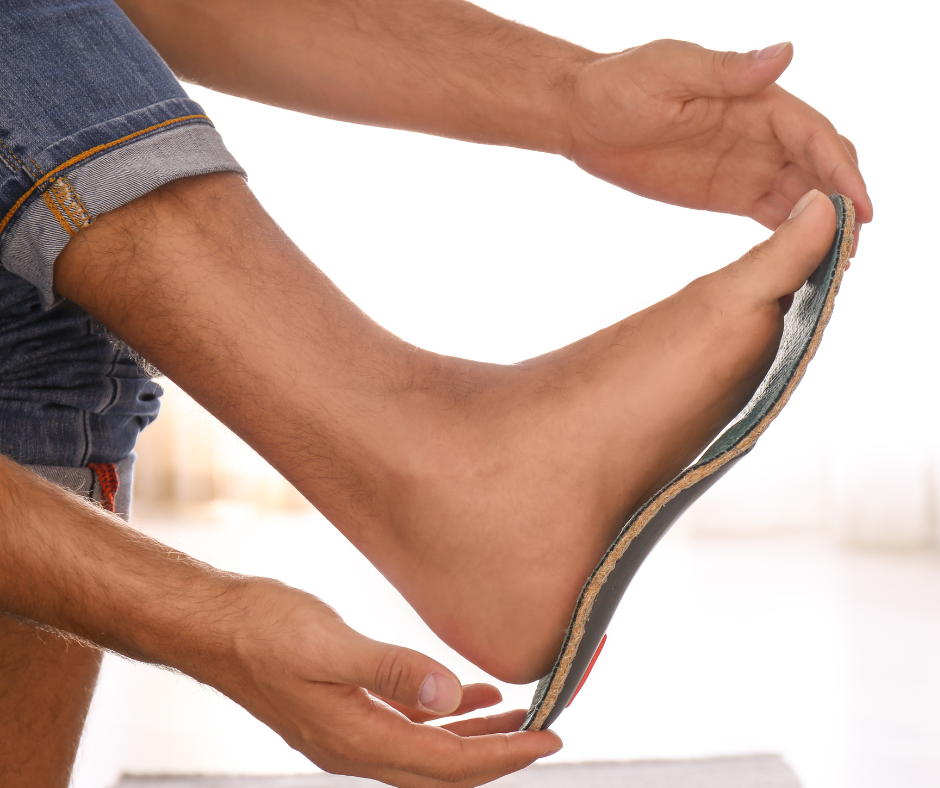
Foot pain can sideline even the most active individuals, but before you resign yourself to chronic discomfort, consider the wide variety of treatments available from your local podiatrist. With options ranging from the conservative to the innovative and everything in between, a DPM can restore balance and mobility while managing pain.
The key is finding the right approach for your specific needs! For this blog, the team at Kentland’s Foot and Ankle Center wants to keep you posted on a few of the most effective ones. Read on to learn more about the options available to you, from exciting newbies to tried-and-true standards.
Starting Simple: Rest, Therapy, and Orthotics
The first line of defense is often the simplest.
- Rest, ice, and pain medication might provide relief in the short term.
- Physical therapy strengthens supporting muscles and improves flexibility, addressing the root cause of pain and preventing future problems.
- Custom orthotics deserve special mention. By providing personalized support and correcting biomechanical imbalances, they can significantly improve comfort and function.
You can get the best of both worlds via a combined approach: A 2023 study published in the Journal of the American Podiatric Medical Association (JAPMA) found that physical therapy combined with custom orthotics was highly effective in reducing pain and improving function in patients with plantar fasciitis.
- High-tech and low-tech can also complement one another. For example, our team utilizes 3D orthotic scanning technology to create orthotics tailored to your unique foot shape.
- This ensures a superior fit and function compared to traditional casting methods.
Stepping Up: Advanced Techniques for Persistent Pain
If conservative measures don’t provide lasting relief, your podiatrist might recommend more advanced interventions.
- Shockwave therapy, for instance, utilizes sound waves to stimulate tissue healing and reduce inflammation.
- Studies have shown promise for its effectiveness in treating plantar fasciitis and Achilles tendonitis.
Sometimes, a minimally invasive surgical procedure might be the best approach.
- Many podiatrists are skilled surgeons, able to perform procedures like bunionectomy or hammertoe correction with minimal scarring and downtime involved.
Are you interested in learning more? We’re always happy to help! Schedule a comprehensive foot examination with Kentlands Foot and Ankle Center podiatrist Dr. Jon M. Sherman. To make your appointment, please call our office at 301-330-5666.
-
Good News for People with Chronic Heel Pain!
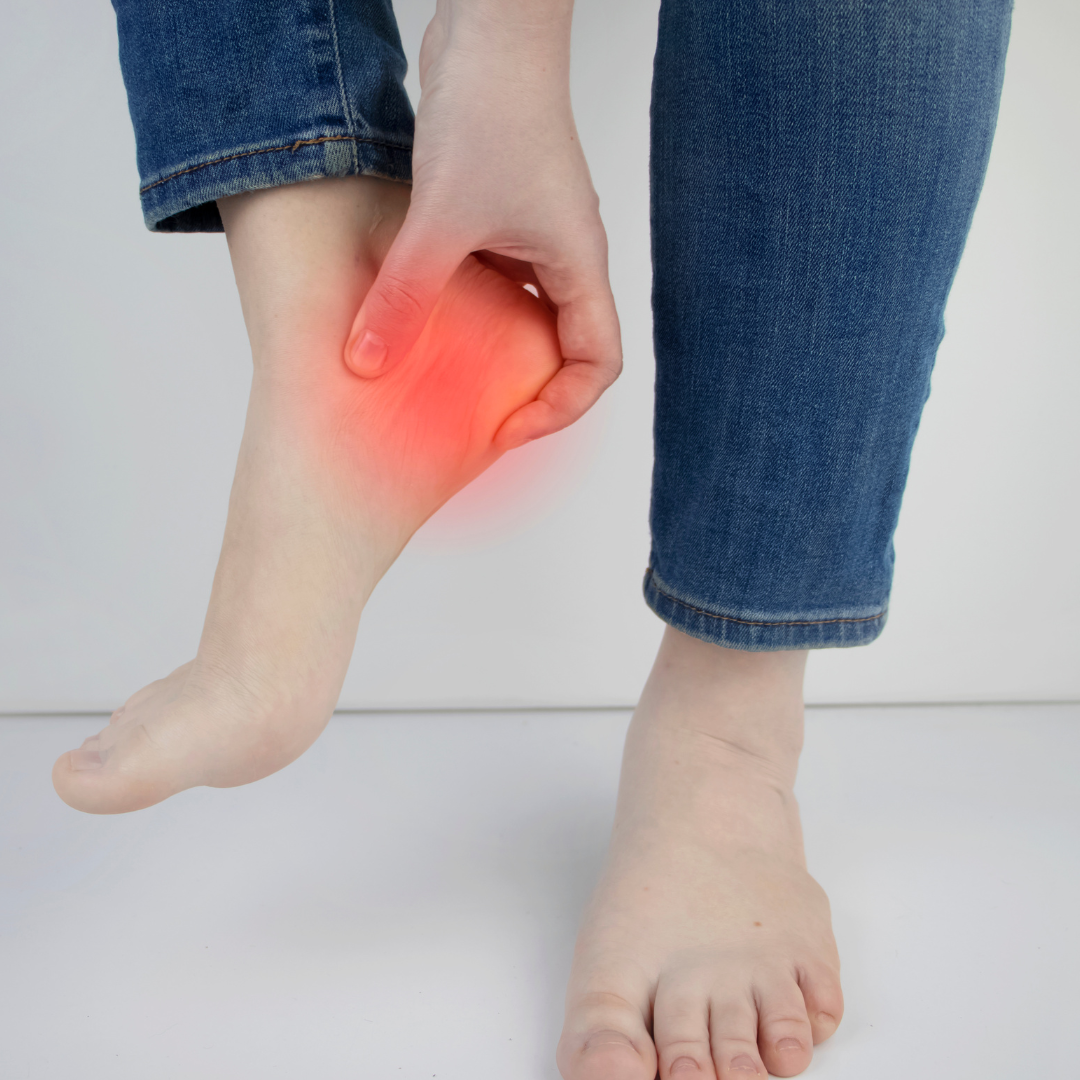
A twitch of pain somewhere in your foot is one thing – brief and tolerable. Thank goodness it goes away.
Heel pain that doesn’t go away is an entirely different matter. We’re talking about the heel pain that greets you like a knife when you step out of bed every morning. The kind of intense pain that makes you cry out, perhaps with a few choice words you didn’t mean to say. This kind of pain requires attention from Kentlands Foot and Ankle Center’s board-certified podiatrist, Dr. Jon M. Sherman, because it’s not likely to get better on its own.
Plantar fasciitis, explained!
The medical term for chronic heel pain is plantar fasciitis. Any medical word with the suffix “-itis” means “inflammation.” In this case, it’s the plantar fascia that’s inflamed. The plantar fascia is a large, thick ligament that runs along the bottom of your foot, connecting the calcaneus (heel bone) to your toes. It’s easily inflamed under some circumstances:
- You have a job that requires you to be on your feet for much of the day, such as a waiter, nurse, or urban mail carrier.
- You’re a runner or walker who’s recently increased their mileage, pace, or distance.
- You participate in other athletic activities, such as ballet, that put a lot of stress on your feet.
- You’re carrying some extra pounds, which puts undue stress on your feet.
- You have pre-existing issues with your foot anatomy, such as flatfoot or high arches.
- You’re over 40: The older you are, the more likely you will develop plantar fasciitis.
The pain you don’t have to live with
Fortunately, we have many effective treatments that soothe the pain of plantar fasciitis. Dr. Sherman will likely start with conservative approaches, including taking a break from any activity that hurts, performing stretching exercises, icing, taking anti-inflammatory medications, wearing custom orthotics, and getting steroid injections. Often, the best treatment involves a combination of all these.
Other treatment options include non-invasive shockwave therapy (ESWT, laser light therapy/cold laser, and physical therapy. Surgery for plantar fasciitis is a possibility but not a common one.
The key to successful plantar fasciitis treatment is getting it promptly. Don’t wait. We encourage residents of Montgomery County to consult Dr. Sherman sooner rather than later for a full examination and assessment of their heel pain. Call 301-330-5666 or contact us online for an appointment at our Gaithersburg podiatry office.
RECENT POSTS
categories
- Uncategorized
- Featured Articles
- Foot Disorders
- Broken Ankle
- Broken Toe
- Fracture
- Foot Health
- Foot Care
- Arthritis
- Foot Pain
- Skin Cancer
- Podiatry Appointment
- Custom Orthotics
- Podiatrist
- Diabetes
- Gout
- Heart Health
- National Nutrition Month
- National Foot Health Awareness Month
- Foot Safety
- Foot and Ankle Injuries
- Falls Prevention
- Chronic Heel Pain
- Shoes
- Laser Therapy
- Quoted
- Physical Therapy
- KeryFlex
- Sweat
- Summer Foot Care
- Sports Injury
- ESWT
- Fungal Toenails
- Bunion
- Plantar Fasciitis
- PinPointe Laser
- Heel Pain


